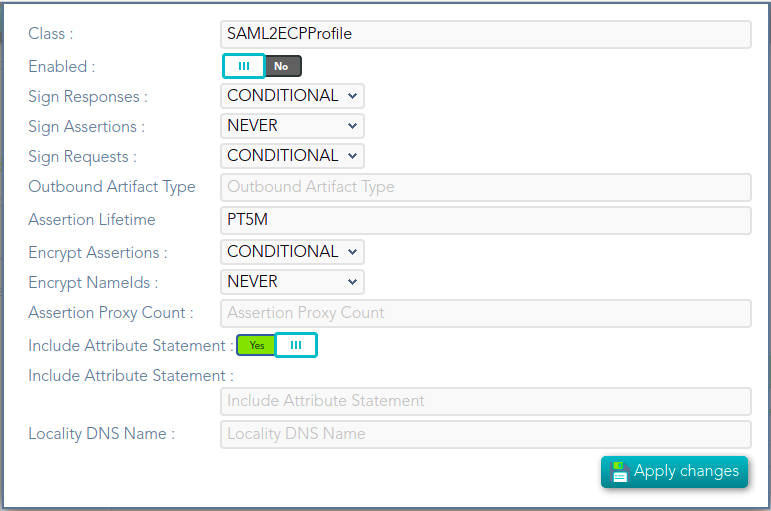SAML2ECPProfile
Definition
The Enhanced Client Profile is used when the Service Provider is not a web application. Nowadays, it is rarely used, as most mobile applications have shifted to OAuth or OpenIDConnect.
When you are configuring the profile, you could define what data will be encriptedencrypted and signed.
Screen overview
Standard attributes
- Class: class name (readOnly field).
- Enabled: if it is checked (selected option is Yes) that protocol will be enable.
- Sign Responses: usually it can be set to never, as long as the assertions are signed. Its preferable to sign assertions rather than responses, because the assertion can be forwarded by the service provider to another service provider, but the response not.
- Sign Assertions: it's advisable to sign every assertion, so it avoids assertion spoofing. The assertion can be forwarded by the service provider to another service provider.
- Sign Request: the identity provider will issue requests to service providers in order to perform the single logout process. Unless it is needed by any service provider, leave it to conditional.
- Encrypt Assertions: is a desired feature, but some service providers, mainly public cloud service providers do not support it. Thus, the default value is to never encrypt, but you can set it to optional or always as needed.
- If you set it to optional and the public key of the service provider who is going to receive the assertion is available, it will be used to encrypt it.
- If you set it to never, it will not ever be encrypted in any case.
- If you set it to always, but the remote service provider encryption key is unknown, an exception will be raised.
- Encrypt NameIds: should be let to never.
- Assertion Proxy Count: sets the maximum number of hops that can be accepted for any assertion. A number of 0 does not set any limit
- Include Attribute Statement:
-
- If the attribute statements are included (selected value is Yes), that is the user attributes are included on the response the performance is increased as this additional step is no longer needed. It is particularly recommended when using public cloud service providers.
- If attribute statements are not included (selected value is No), the service provider will receive the SAML assertion with the principal name, then the service provider will issue a attribute statement request to the service provider to get them.
-
LocalLocality DNS Name

